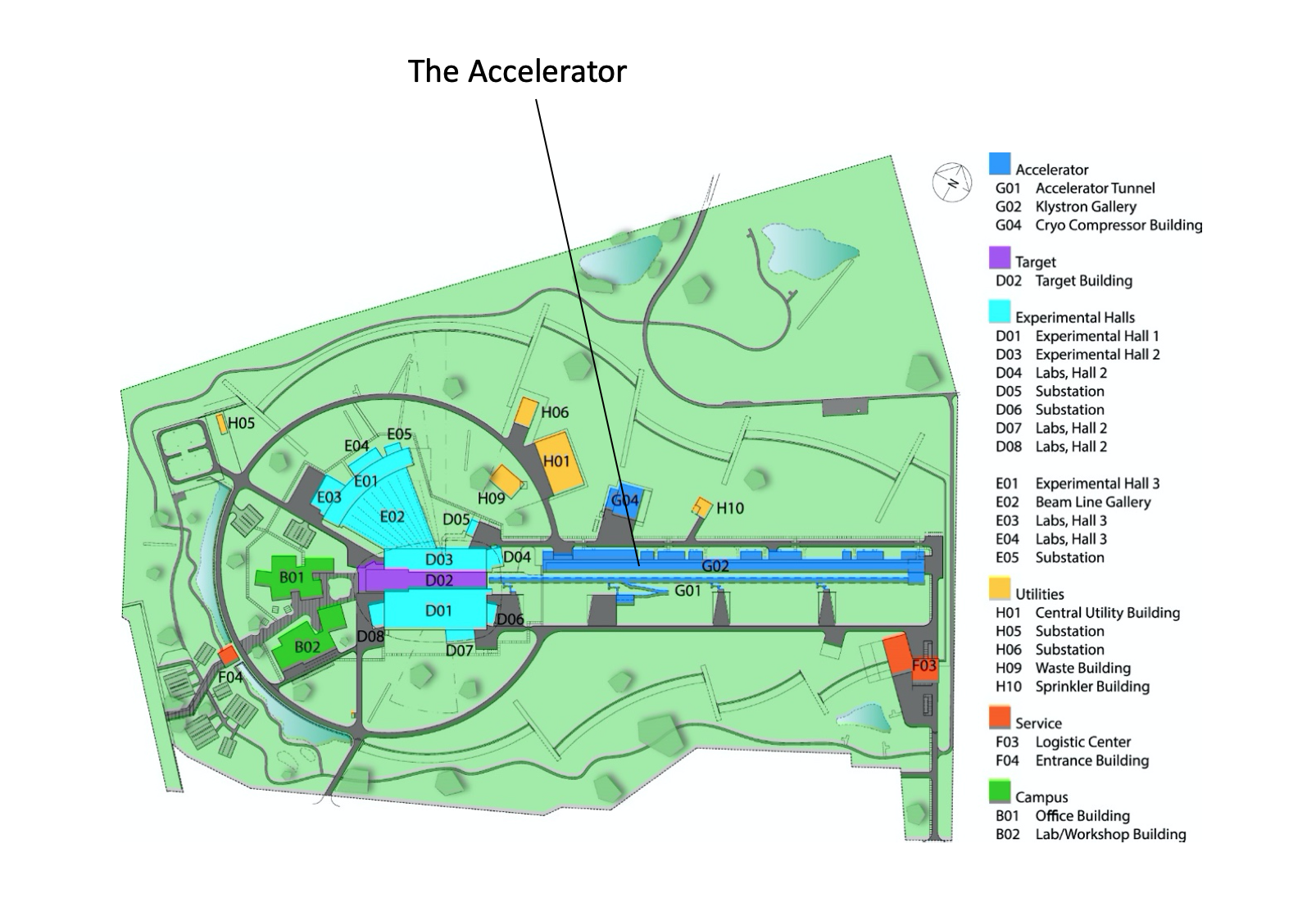Accelerator
The Accelerator will be the world’s most powerful proton accelerator, and as such, a technical challenge to design. Among the technical novelties is the usage of superconducting spoke accelerator cavities, which will be used for the first time in a particle accelerator. Spoke cavities open the possibility to use superconducting technology at relatively low speed, thus making the acceleration of low energy particles more energy efficient. The ESS accelerator high-level requirements are to provide a 2.86 ms long proton pulse at 2 GeV at a repetition rate of 14 Hz. This represents 5 MW of average beam power with a 4% duty cycle on target. The excellent performance of the ESS moderator design will deliver almost the same neutron performance at the initial 2 MW accelerators power as originally foreseen at 5 MW.
Current
- Individual systems have been factory acceptance tested and are now making their way to ESS.
- The non-invasive beam diagnostics equipment invention has been finalised and a company has shown interest in making the invention a product.
- Improved specifications for vacuum equipment throughout the complete accelerator are established.
- Installation of equipment is following the Spatial Integration according to the 3D Master Model of the ESS plant layout.
- Test, installation and integration is running according to plan but COVID-19 will impact.
Future
- Possibility to build test facility as a mini system out of spare parts. This will enable offline preparation for test, installation and integration.
- Several concepts on how existing equipment can be improved and innovated. A prioritised plan will be established.
- As analysis data becomes available, the prediction of operational behaviour will enable maintenance and update plans.
- Commercialisation of the non-invasive beam diagnostics equipment invention is in progress.
- According to the increasing operational information flow, further use of Solid-State RF technology/IOT equipment will be considered.


